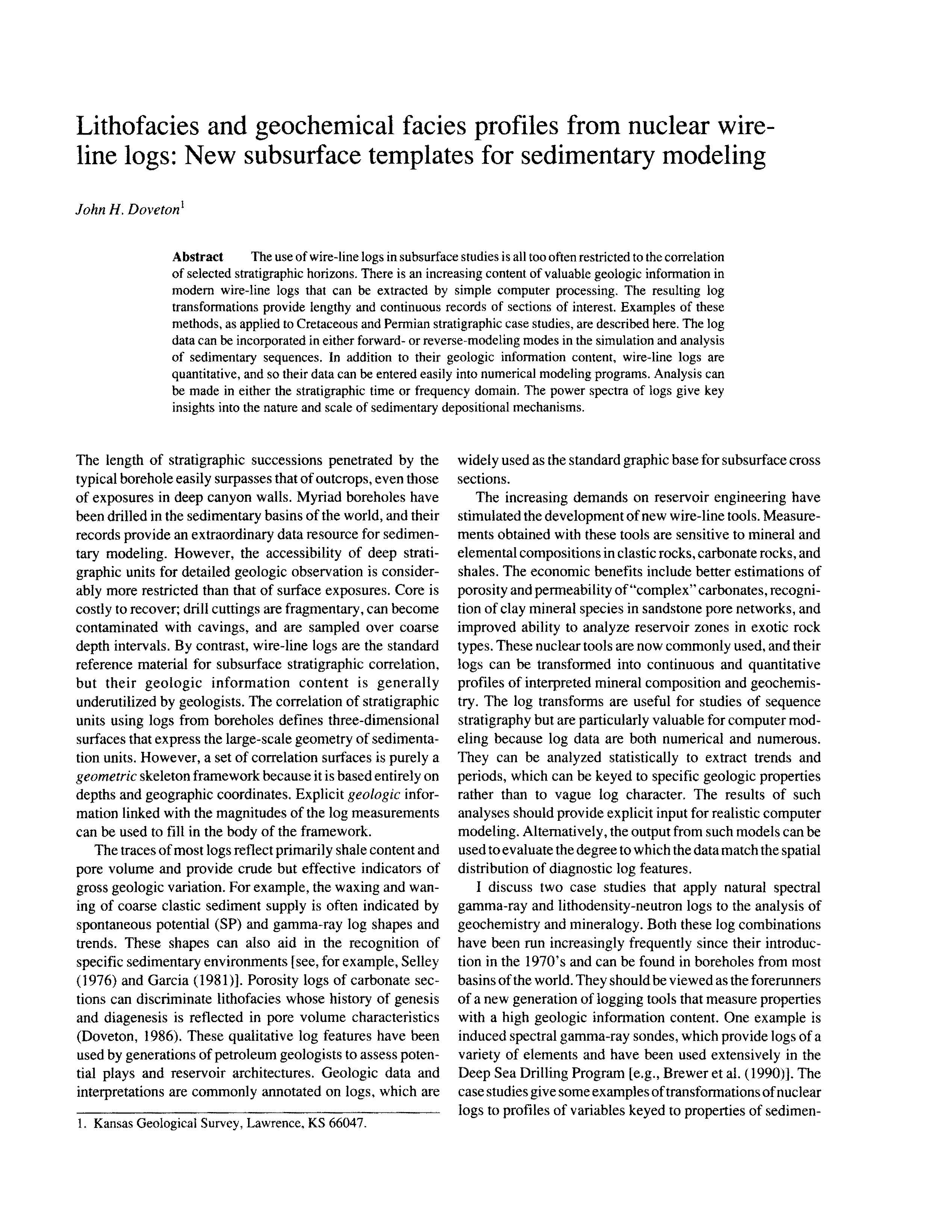Lithofacies and geochemical facies profiles from nuclear wire-line logs: New subsurface templates for sedimentary modeling
DOI:
https://doi.org/10.17161/kgsbulletin.no.233.20451Abstract
The use of wire-line logs in subsurface studies is all too often restricted to the correlation of selected stratigraphic horizons. There is an increasing content of valuable geologic information in modern wire-line logs that can be extracted by simple computer processing. The resulting log transformations provide lengthy and continuous records of sections of interest. Examples of these methods, as applied to Cretaceous and Permian stratigraphic case studies, are described here. The log data can be incorporated in either forward- or reverse-modeling modes in the simulation and analysis of sedimentary sequences. In addition to their geologic information content, wire-line logs are quantitative, and so their data can be entered easily into numerical modeling programs. Analysis can be made in either the stratigraphic time or frequency domain. The power spectra of logs give key insights into the nature and scale of sedimentary depositional mechanisms.
Downloads

